#power connector pins
Explore tagged Tumblr posts
Text
Plug wire, Socket Plug connectors, pin and socket connectors, pin headers
873 Series 6 A 3 Position Push Wire Luminaire Disconnect Connector
#WAGO#873-953/VE00-0500#Connectors#Pin and Socket Connectors#Plug Housings#Header plugs#Pin headers#PCB sockets#power connector pins#header contains#Interconnect#Pin Terminal Connector#plug wire#Socket Plug connectors
1 note
·
View note
Text
https://www.futureelectronics.com/p/interconnect--rectangular-connectors/dt06-6s-te-connectivity-5076065
Wire to board connector, Electrical connector, wire connectors, Pin connectors
DT Series 6 Position Three Row Female Socket Free Hanging Plug Housing
#TE Connectivity#DT06-6S#Connectors#Rectangular Connectors#wire to board#Electrical connector#wire connectors#Pin#power connectors#10 pin header connector#cable connectors#connector housing#Industrial electrical connector#molex connector
1 note
·
View note
Text
https://www.futureelectronics.com/p/interconnect--rectangular-connectors/dt06-2s-ce13-te-connectivity-4081893
Rectangular industrial connectors, Pin connectors, Contact Termination,
DT Series 2 Position Single Row Female Socket Free Hanging Plug Housing
#Connectors#Rectangular Connectors#DT06-2S-CE13#TE Connectivity#industrial connectors#Pin connectors#Contact Termination#Plastic Connectors#Plug Housing#power cable#power connector#wire connectors#cable connector
1 note
·
View note
Text
https://www.futureelectronics.com/p/interconnect--pin-and-socket-connectors--header-plug-board-mount/1-776163-1-te-connectivity-3170771
High power connectors, Card Connector, Micro-plugs, receptacle housing connector
AMPSEAL 35 Position Three Row Snap Mount Right Angle Pin Header
#TE Connectivity#1-776163-1#Pin and Socket Connectors#Headers Connectors#board#Multi pin connector#pin plug connector#board mount connector#plug housing#Male Pin Header#High power connectors#Card#Micro-plugs#receptacle housing connector
1 note
·
View note
Text
https://www.futureelectronics.com/p/interconnect--connectors-rectangular-plastic-industrial/776164-1-te-connectivity-5186781
Wire connectors, cable connectors, pin connectors, power connectors
AMPSEAL 35 Position Latch Lock Crimp Terminal Free Hanging Plug Housing
#TE Connectivity#776164-1#Connectors#Headers and Wire Housings#wire#cable#pin#power connectors#Circuit wire#header plug#header board#socket mount wire#Plug Housing#wire mount socket#electrical wire connectors
1 note
·
View note
Text
https://www.futureelectronics.com/p/interconnect--dual-in-line-package-sockets/9-188275-0-te-connectivity-7567159
Pin and Socket Connectors, Cable Assemblies, Socket Adaptor Connector
20 Position Dual Row 2.54 mm Board to Board Micro-Match SMT Receptacle
#TE Connectivity#9-188275-0#Connectors#IC and Component Sockets#Pin and Socket#Cable Assemblies#Socket Adaptor#integrated circuit socket#Electrical socket#Dip socket#Socket Plug#power plugs and sockets#Plug and socket systems#Universal
1 note
·
View note
Text
https://www.futureelectronics.com/p/interconnect--connector-tools-contacts-accessories/770520-1-te-connectivity-7179641
What is a pin header connector, Connectors, socket housing, socket header
AMPSEAL 16-20 AWG Wire to Cable Crimp Socket Contact
#Connectors#Tooling and Accessories#770520-1#TE Connectivity#what is a pin header#socket housing#socket header#rectangular connector#crimp#plug connectors#Power Jacks#crimping tool#USB connectors#IC socket
1 note
·
View note
Text
youtube
USB type C: Explore GCT's 6, 16, and 24 pin connector range
https://www.futureelectronics.com/m/global-connector-technology GCT’s USB connectors feature 6, 16 and 24-pin ranges, we highlight the capabilities that set these connectors apart. From IP67 rated to advanced 240W power delivery options. Discover the unique features of each pin configuration and how they cater to different device requirements. https://youtu.be/NIBOPKBIbc4
#USB type C#GCT connector#GCT USB connector#GCT#USB#connector#IP67 rated#power delivery#pin configuration#Youtube
1 note
·
View note
Text
youtube
USB type C: Explore GCT's 6, 16, and 24 pin connector range
https://www.futureelectronics.com/m/global-connector-technology GCT’s USB connectors feature 6, 16 and 24-pin ranges, we highlight the capabilities that set these connectors apart. From IP67 rated to advanced 240W power delivery options. Discover the unique features of each pin configuration and how they cater to different device requirements. https://youtu.be/NIBOPKBIbc4
#USB type C#GCT connector#GCT USB connector#GCT#USB#connector#IP67 rated#power delivery#pin configuration#Youtube
0 notes
Text
https://www.futureelectronics.com/p/interconnect--connector-tools-contacts-accessories/1060-20-0122-te-connectivity-4076061
Crimp wires, Cable Assemblies, crimping connectors, wire cable assembly
16 - 22 AWG Size 20 Male Crimp Pin for Automotive Connectors
#TE Connectivity#1060-20-0122#Connectors#Tooling and Accessories#applications#wires#plug housing#crimping tool#Cable Assemblies#crimping connectors#wire cable#coax assemblies#Micro plugs power connector#Male Crimp Pin
1 note
·
View note
Text
Industrial connectors, Rectangular Plastic, Rectangular Industrial Connector
DTM Series 2 Position Single Row Male Pin Free Hanging Receptacle Connector
#Connectors#Rectangular Connectors#DTM04-2P#TE Connectivity#industrial connectors#Rectangular Plastic#Rectangular Industrial Connector#rectangular connector housing#connectors#Wire connectors#circuit board power connector#wire-to-board connector 2 pin
1 note
·
View note
Text
https://www.futureelectronics.com/p/interconnect--connector-tools-contacts-accessories/0462-005-20141-te-connectivity-3076065
Wire-to-wire headers, socket mount, receptacle socket
16-18 AWG Size 20 Nickel Plated Crimp Automotive Terminal Contact Socket
#Connectors#Tooling and Accessories#0462-005-20141#TE Connectivity#wire-to-wire headers#socket mount#receptacle socket#Board-to-board headers#Board mount connector#Header plug#Pin headers#wire housings#plug connectors#PCB power jack
1 note
·
View note
Text
Connector Adapter, Solar power connectors, contact insertion tools
1062 Series 22-16 AWG Socket Contact
#TE Connectivity#1062-20-0222#Connectors#Tooling and Accessories#Connector Adapter#Solar power connectors#coaxial compression#Power Jacks#SMB plug#IC socket connector#contact pin crimping tool#cable accessories#Newark connectors#wire crimper
1 note
·
View note
Text
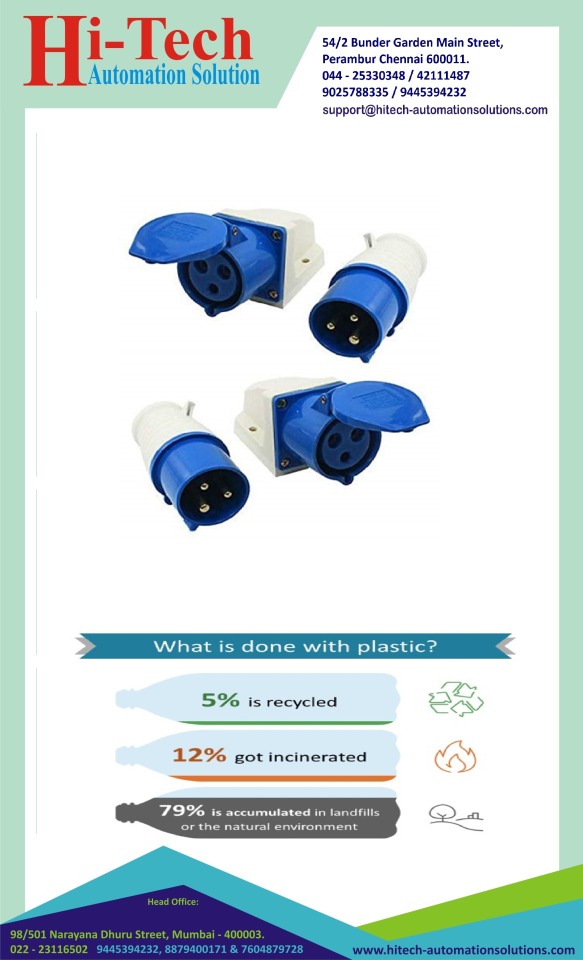
#bestindustry #bestoffers #OnTimeDelivery #bestprice #goodservice #donateorgansavelives #Hi-Tech Automationplugs and sockets?Image result for 6 way plug and socket DEFINITIONA plug is the movable connector attached to an electrically operated device, and the socket is fixed on equipment or a building structure and connected to an energised electrical circuit. The plug is a male connector, often with protruding pins that match the openings and female contacts in a socket. plug is suitable for India?For India there are three associated plug types, types C, D and M. Plug type C is the plug which has two round pins, plug type D is the plug which has three round pins in a triangular pattern and plug type M is the plug which also has three round pins. India operates on a 230V supply voltage and 50Hz.add a 6 pin power supply?Image resultLocate the 6–pin auxiliary power supply cable with the connector labeled To GFX Card or Splitter and release the cable from the cable retainer. If the splitter cable is attached to the connector, remove and retain the splitter. Attach the 6–pin connector on the adapter cable to the 6–pin power supply cable.6 pin used for?6-pin power connectors are typically found in low and mid-range graphics cards. The 6-pin power connector has 4.2mm pitch and can pull up to 75 watts of power directly from an external power supply, bypassing the motherboard entirely.6 amp socket used for?6/16A and 25A ratings. They are used for connecting geysers, AC, Room heaters , Kitchen appliances and water pumpsCan we use 16A plug in 6A socket?Yes it is safe to use a 16 amp plug on a 6 amp socket provided you will never draw more than 6Amp out of it, and it is very unsafe if you forgot this rule and accidently loaded it with a resistive load over > 6 Amp.convert 6A socket to 16A?Image resultThe package contains 1pc Conversion Plug(6A-16A) KAVANA (6-16A)Converter plug is used to Convert Regular Home Sockets of 6 amp to 16amp Outlets so that one can attach 16A Big Size Plugs to the Small home Sockets. Its applications include powering of 16A loads or International Plug Tops from various countries 6 pin connector called?The '6-PIN bayonet connection' is also called a '6-pin plug'. You will find this connection mainly on Fristom lights. The connector looks very much like the much used Aspöck variant with 5-PINs or 7-PINs.
#bestindustry#bestoffers#OnTimeDelivery#bestprice#goodservice#donateorgansavelives#Hi-Tech Automation#plugs and sockets?#Image result for 6 way plug and socket DEFINITION#A plug is the movable connector attached to an electrically operated device#and the socket is fixed on equipment or a building structure and connected to an energised electrical circuit. The plug is a male connector#often with protruding pins that match the openings and female contacts in a socket.#plug is suitable for India?#For India there are three associated plug types#types C#D and M. Plug type C is the plug which has two round pins#plug type D is the plug which has three round pins in a triangular pattern and plug type M is the plug which also has three round pins. Ind#add a 6 pin power supply?#Image result#Locate the 6–pin auxiliary power supply cable with the connector labeled To GFX Card or Splitter and release the cable from the cable retai#remove and retain the splitter. Attach the 6–pin connector on the adapter cable to the 6–pin power supply cable.#6 pin used for?#6-pin power connectors are typically found in low and mid-range graphics cards. The 6-pin power connector has 4.2mm pitch and can pull up t#bypassing the motherboard entirely.#6 amp socket used for?#6/16A and 25A ratings. They are used for connecting geysers#AC#Room heaters#Kitchen appliances and water pumps#Can we use 16A plug in 6A socket?
0 notes
Text
How to Make: Electronic Wings for Cosplay

Hello Everyone! It's been a while since I last uploaded a written tutorial on here and since I just finished and wore my Dame Aylin cosplay this last weekend it seemed appropriate to jump back in with a tutorial on one of the costume pieces!
Her wings were the star of the show this weekend and I know a lot of people were curious about how I made them! A huge source of knowledge and inspiration behind these wings was this video by Axceleration, I made a few changes to the frame shape and electrical circuitry for mine but her tutorial was a huge stepping stone to give me the confidence to tackle them myself!
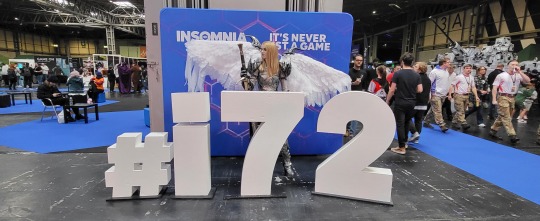
Health and Safety:
When working with Sintraboard (as well as other thermoplastics) it is incredibly important you wear a respirator as well as goggles when heating, moulding and cutting it. The fumes this plastic will give off when heated up are no joke! Make sure you're in a well-ventilated space!
Basic tool safety knowledge is also really important! wearing gloves when using power tools can be more dangerous in most situations, so always be aware of where your hands are vs where the tools are. Always cut away from yourself and take things slowly, don't panic.
Electrical safety! You're working with live wires and circuitry! make sure your hands are dry, you aren't touching the bare wires at any point when they are connected to a power source, and if you choose to solder anything, make sure you're wearing heat-proof gloves and a mask in a ventilated space!
Tools
Wire stripper
Screwdriver and wrench
Dremel - I recommend the Dremel 3000 rotary tool personally! Some essential Dremel bits you'll need for this include, a sanding bit, drill bit (smaller or same size as your screws/bolts), and a small/narrow cutting bit. These will usually come with the Dremel!
Heat Gun (A hairdryer will not get hot enough to heat the Sintraboard!!)
Pipe cutter (alternatively you can use a hacksaw for this!)
Hacksaw
Ruler
Scissors (for cutting fabric straps)
Materials
Heat shrink Tubing
2 core electrical wire
switch (you want a three position, six pin switch, like this one, even better if it has the Screws on the pins! otherwise you'll need a soldering kits to solder the wires to the pins.
2x 8AA 12v Battery Holders
2x 12v Linear Actuators (Mine had a stroke length of 100mm)
21.5mm PVC Pipes (I got 2x 3m Lengths)
2x 21.5mm PVC Pipe straight couplers
6mm 8"x12" Sintraboard
Nuts/Bolts/Screws (I used M5 bolts for the base & Actuator connectors and M6 screws to attach the hinges to the pipes! You'll need Washers for every Nut & Bolt!)
Hinges (I used 2.5cm wide hinges that were skinny but long so they would just about fit along the PVC pipe! 3" gate hinges would work!)
50 metre Polythene Jiffy foam roll (in retrospect this was ALOT of foam, you could definitely get away with maybe a 20-30 metre roll! I now have a load leftover XD)
16 AA Batteries (I used 16 and had enough for the whole day with them on, I think They'd probably be enough for another half a day-full day too! but have spares just in case!)
Webbing strap ( I went for grey to match my base suit colour!)
Buckle - as wide as the webbing strap you use!
3 metres of white cotton fabric (or whatever colour wings youre going for!)
Optional
Zipties (for cleaning up the wires)
Lets Go!
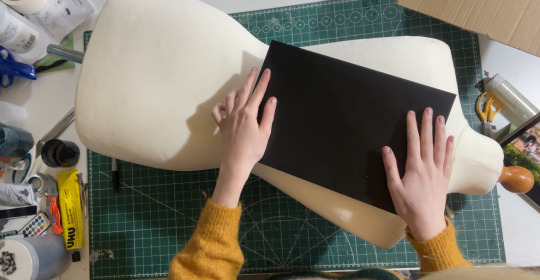
Sintraboard is this wonderfully stable thermoplastic that is relatively easy to cut into (with the right tools) and when heated allows you to mould its shape! I started by using a mannequin and heating the Sintraboard with a heat gun for a few minutes to make it pliable, I recommend using gloves for this part as the materials gets VERY HOT! Press the board into the shape of the mannequin's back, taking note of the edges especially! you want this board to sit as comfortably to your body shape as possible as it makes a huge difference to how long you can wearing the wings for in this backplate is comfy!
Once shaped, I placed it against my back to make sure it was a good fit, heating again and making any alterations I needed (again don't place bright hot plastic to your bare skin! wear protective clothes and wait till its slightly cooler to do this, with the help of a friend!). I then took a hacksaw and rounded the corners, before sanding the edges with my Dremel! Try to avoid cutting off loads, just enough to make things less likely to snag.
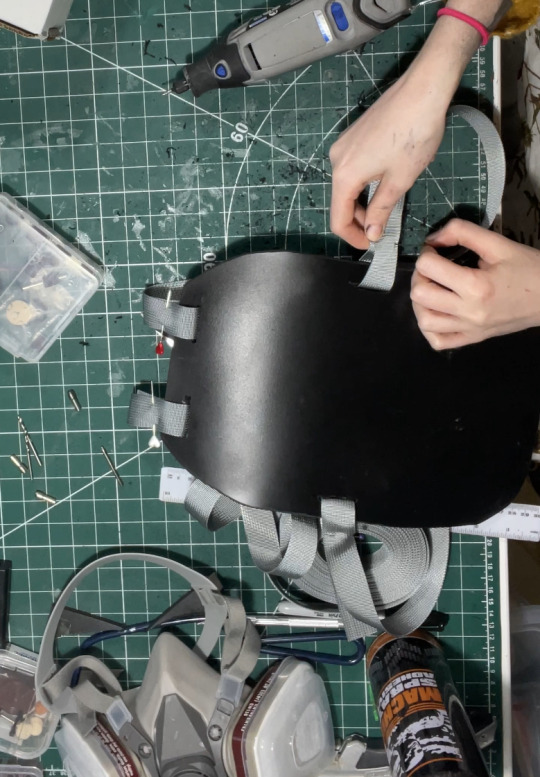
3. I then cut in four holes, wide enough to feed my webbing strap through, two at the top and one on either side below where my arms would sit! I measured the webbing strap by firstly feeding them through the top holes and pinning them, and then bring the strap over my should to everything sits where it should and seeing where the strap hits the side hole and cutting the length there! you'll also want a strap that attaches across the chest, meeting in the centre with a buckle!
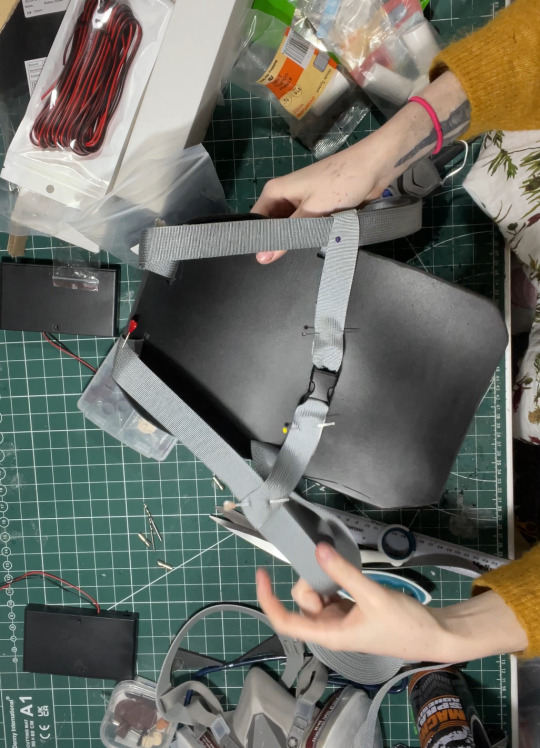
4. After sewing the straps closed I was able to move onto the PVC pipe structure! This may change slightly depending on the finished shape you want but I needed the PVC pipes to come out from inside a breastplate so had a particularly angle as well as character references to work with! I began by heating the pipe over my heat gun and flattening a portion of it under a heavy object so it would sit much more flush against the backboard and sit better underneath my breastplate before moving onto securing the first portion of the structure to the backplate. This mainly involved lots of try-ons and measuring to make sure the angles were correct and symmetrical and was quite fiddly but well-worth the effort! I'll include a diagram of the general shape I went with below:
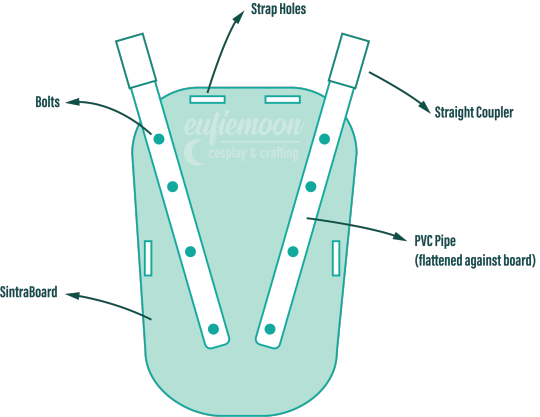
5. I wanted my wings to be relatively modular for ease of travel so I needed to make sure certain portions of them could come away from other parts easily, so I popped a straight coupler on the top of the pipes that were attach to the breastplate, this also meant I could slot the breastplate over these shorter pipes and wear everything correctly! Then these second pipes slot on and at the other end they are attached via hinges to the longest portion of the pipe 'skeleton', Diagram below:
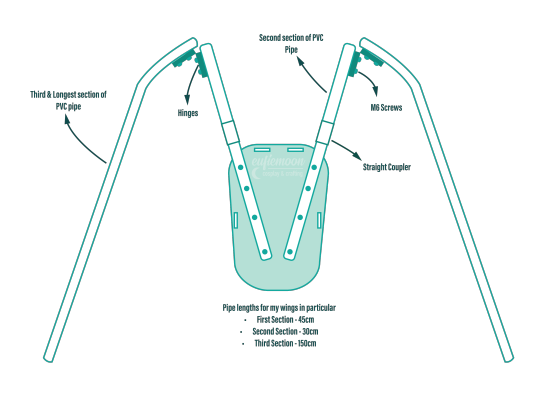
6. Now that the skeleton was put together, it's time for the electrical stuff! It's a good idea to figure out where your circuit is going to lay on the skeleton - consider if you want the battery packs mounted the the backplate or, like me, put them inside the actual wings in removeable pockets for easy access and removal for battery changes. all your wires will go through the switch so deciding where you want to place that is very important! Mine was placed just over my shoulder on the front side, mounted to the PVC pipe with a metal cover I drilled a hole into to slip the switch through and then drill through the pipe.
I've included another diagram below that explains all the electrical circuitry, including which wires go on which pins on the switch!
Important to note: The linear actuators need to be placed and bolted into the PVC pipes at *exactly* the same angle on each side, any slight deviation will lead to the wings going up wonkily! So take your time and make as many adjustments as necessary.
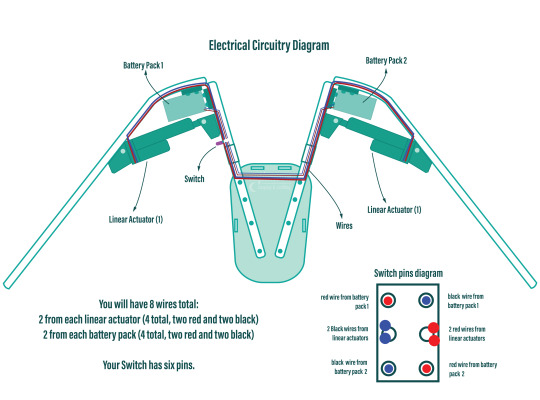
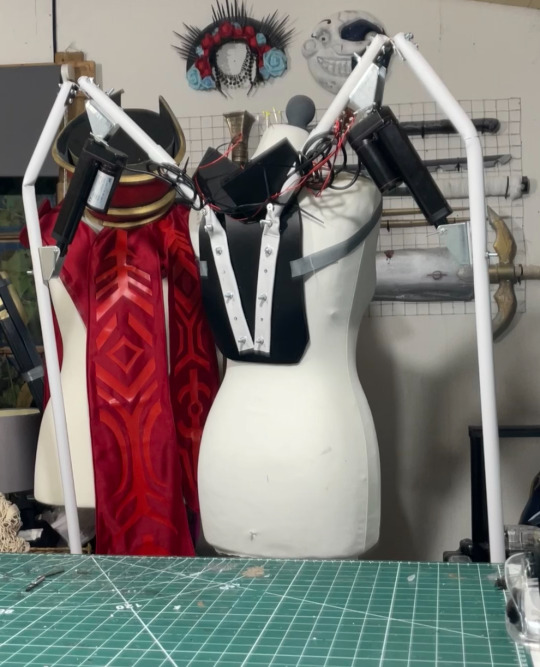
7. You can extend your wires by adding on the electrical wire, just match the colours, and put heat shrink tubing over the connections to hide the live wires! I ended up zip-tying the wires into organised bundles once the wings were done to help keep everything safe from snags.
8. Now its time for the Wings themselves! I drafted my base pattern by just draping the white cotton fabric I had over the wing when it was fully extended. I then pinned the wings to the shape I wanted them to be along the bottom before cutting along the pins. I ran the fabric through my sewing machine to close the bottom edge, leaving a gap wide enough by the wing base so I could slip the wing on and off, closing it with velcro. I also added little fabric pockets inside of these to hold my battery packs, which also connected via velcro for easy removal!
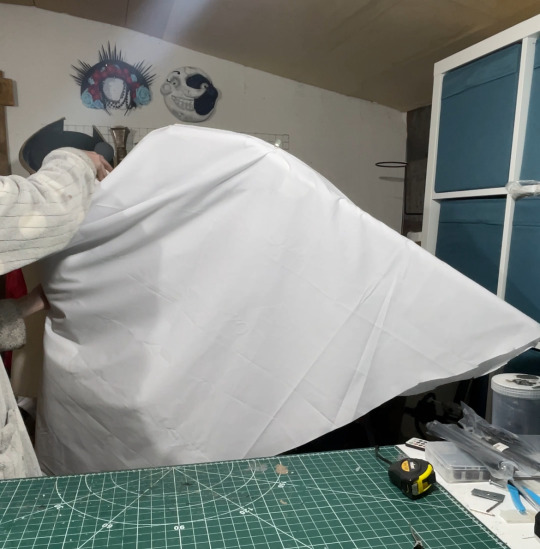
9. Now that I had a wing base I was able to begin making feathers! I cut out a total of 800 feathers out of polythene jiffy roll for these wings, in 6 different styles and using real life bird wings to dictate the shapes I used and where I placed them. I ended up hot gluing every individual feather onto the white fabric base, going row by row until every side was covered, the wing covers themselves are super light because of the foam feathers and they shine light through them in a really magical way!
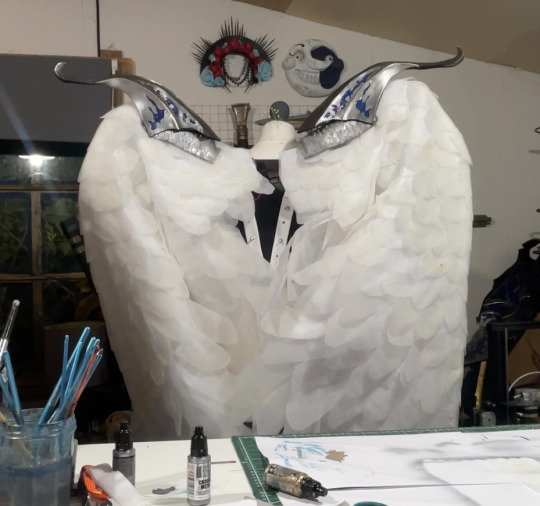
Optional: I also ended up going over these feathers with my airbrush and some super light beige paint to help darken the shadows, this is entirely optional and may change depending on the wings you're looking to make!
When in neutral position and in extended position the wings looks like this:

Mine had a wingspan of about 7ft total when fully extended but when in neutral position they were fairly close to my own proportions! mainly staying behind me and weren't much of a problem in a packed con hall!
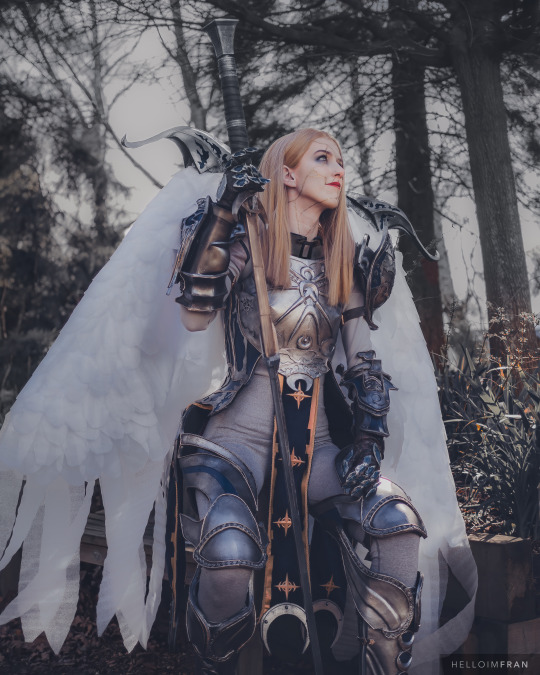
Photo by: Helloimfran (on Instagram and Twitter)
I hope this tutorial helped and if there are any questions about anything in specific don't hesitate to reach out at [email protected] or on my instagram or twitter (@eufiemoon)
Happy Crafting!

#cosplay#cosplayer#cosplaying#baldurs gate iii#baldur’s gate 3#baldurs gate 3#bg3#dame aylin#aylin x isobel#bg3 aylin#cosplay tutorial#Wings#fantasy#tutorial#cosplay help#cosplay tips
155 notes
·
View notes
Text

mini Sparkle Motion prototype - a tiny, fully-featured WLED board ✨🔌📏💡🌈
We're doing a lot of serious testing with our WLED mega-board, code-name Sparkle Motion .
While doing some holiday lighting projects, we also wanted something slim enough to slip into any design. It still uses an ESP32 for the best support, with USB-serial programming, 5A fuse, 5V level shifting + 100 ohm series resistors for pixel drivers, user/reset buttons, a user LED and onboard neopixel, JST SH analog/digital connector, QT I2C connector, 4 GPIO plus power/ground breakouts, and USB type C power/data input.
However, this version is made simpler and less expensive by dropping the DC jack and USB PD support: it's only for 5V strips if you want to power them directly (you could still drive 12V or 24V pixels, but you'll need separate power for them). Instead of a full set of terminal blocks for 3 signals, we only have two outputs, and they have to share the power and ground pins. It could also be used for a single two-pin dotstar LED setup. We kept the built-in I2S mic but dropped the on-board IR sensor - if you want an IR sensor, you'll be able to plug it into the JST SH port with a simple cable or solder it into the breakout pads.
The trade-off is that it's much smaller and slimmer, especially when no terminal blocks are soldered in by default: only 1.2" long x 0.785" wide (~1 sq in) x 0.3" thick vs. the original's 2" x 1.3" (2.6 sq in) x 0.55". To get it that small, we went 4-layer to give us a nice big ground and 5V plane in the middle and double-sided assembly. Coming soon.
#sparklemotion#wled#esp32#neopixel#holidaylighting#ledprojects#makers#electronics#prototyping#hardwaredesign#usbtypec#qtconnector#gpio#micromaker#slimdesign#techinnovation#ledcontroller#openhardware#adafruit#diylighting#iotprojects#esp32projects#compactdesign#ledenthusiast#holidaydecor#iotmaker#makercommunity#hardwarehacks#tinytech#ledlights
30 notes
·
View notes